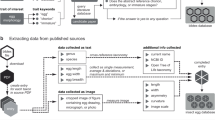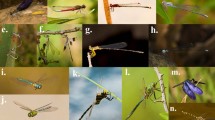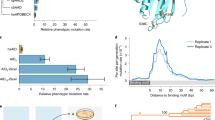Abstract
While a host of molecular techniques are utilized by evolutionary developmental (evo-devo) biologists, tools for quantitative evaluation of morphology are still largely underappreciated, especially in studies on microscopic animals. Here, we provide a standardized protocol for geometric morphometric analyses of 2D landmark data sets using a combination of the geomorph and Morpho R packages. Furthermore, we integrate clustering approaches to identify group structures within such datasets. We demonstrate our protocol by performing exemplary analyses on stomatal shapes in the model nematodes Caenorhabditis and Pristionchus. Image acquisition for 80 worms takes 3–4 d, while the entire data analysis requires 10–30 min. In theory, this approach is adaptable to all microscopic model organisms to facilitate a thorough quantification of shape differences within and across species, adding to the methodological toolkit of evo-devo studies on morphological evolution and novelty.
This is a preview of subscription content, access via your institution
Access options
Access Nature and 54 other Nature Portfolio journals
Get Nature+, our best-value online-access subscription
$29.99 / 30 days
cancel any time
Subscribe to this journal
Receive 12 print issues and online access
$259.00 per year
only $21.58 per issue
Buy this article
- Purchase on Springer Link
- Instant access to full article PDF
Prices may be subject to local taxes which are calculated during checkout





Similar content being viewed by others
Code availability
The entire code for an analysis based on geomorph can be copied from the different steps of the procedure. In addition, two ready-to-use R markdown files that contain the code for both geometric morphometrics packages (geomorph and Morpho) and a R routine that allows the generation of landmark files can be downloaded from the supplementary material of this paper (Supplementary Data 4–6).
References
Pigliucci, M. Phenotypic Plasticity: Beyond Nature and Nurture (Johns Hopkins University Press, 2001).
West-Eberhard, M. J. Developmental Plasticity and Evolution (Oxford University Press, 2003).
Shubin, N., Tabin, C. & Carroll, S. Deep homology and the origins of evolutionary novelty. Nature 457, 818 (2009).
Wagner, G. P. Homology, Genes, and Evolutionary Innovation (Princeton University Press, 2014).
Moczek, A. P. et al. The significance and scope of evolutionary developmental biology: a vision for the 21st century. Evol. Dev. 17, 198–219 (2015).
Minelli, A. Grand challenges in evolutionary developmental biology. Front. Eco. Evol. 2, 1–11 (2015).
Mallarino, R. & Abzhanov, A. Paths less traveled: evo-devo approaches to investigating animal morphological evolution. Annu. Rev. Cell Dev. Biol. 28, 743–763 (2012).
Klingenberg, C. P. Evolution and development of shape: integrating quantitative approaches. Nat. Rev. Genet. 11, 623–635 (2010).
Parsons, K. J. & Albertson, R. C. Unifying and generalizing the two strands of evo-devo. Trends Ecol. Evol. 28, 584–591 (2013).
Andersen, E. C. et al. A powerful new quantitative genetics platform, combining Caenorhabditis elegans high-throughput fitness assays with a large collection of recombinant strains. G3 (Bethesda) 5, 911–920 (2015).
Seydoux, G. & Fire, A. Whole-mount in situ hybridization for the detection of RNA in Caenorhabditis elegans embryos. Methods Cell Biol. 48, 323–337 (2015).
Pertea, M., Kim, D., Pertea, G. M., Leek, J. T. & Salzberg, S. L. Transcript-level expression analysis of RNA-seq experiments with HISAT, StringTie and Ballgown. Nat. Protoc. 11, 1650–1667 (2016).
Friedland, A. E. et al. Heritable genome editing in C. elegans via a CRISPR-Cas9 system. Nat. Methods 10, 741–743 (2013).
Witte, H. et al. Gene inactivation using the CRISPR/Cas9 system in the nematode Pristionchus pacificus. Dev. Genes Evol. 225, 55–62 (2015).
Au, V. et al. CRISPR/Cas9 methodology for the generation of knockout deletions in Caenorhabditis elegans. G3 (Bethesda) 9, 135–144 (2019).
Yoshida, K. et al. Two new species of Pristionchus (Nematoda: Diplogastridae) from Taiwan and the definition of the pacificus species-complex sensu stricto. J. Nematol. 50, 355–368 (2018).
Susoy, V., Ragsdale, E. J., Kanzaki, N. & Sommer, R. J. Rapid diversification associated with a macroevolutionary pulse of developmental plasticity. Elife 4, e05463 (2015).
Susoy, V. et al. Large-scale diversification without genetic isolation in nematode symbionts of figs. Sci. Adv. 2, e1501031 (2016).
Sieriebriennikov, B., Markov, G. V., Witte, H. & Sommer, R. J. The role of DAF-21/Hsp90 in mouth-form plasticity in Pristionchus pacificus. Mol. Biol. Evol. 34, 1644–1653 (2017).
Sieriebriennikov, B. et al. Conserved nuclear hormone receptors controlling a novel trait target fast-evolving genes expressed in a single cell. PLoS Genet 16, e1008687 (2020).
Hong, R. L. & Sommer, R. J. Pristionchus pacificus: a well‐rounded nematode. Bioessays 28, 651–659 (2006).
Sommer, R. J. & McGaughran, A. The nematode Pristionchus pacificus as a model system for integrative studies in evolutionary biology. Mol. Ecol. 22, 2380–2393 (2013).
Sommer, R. J. Pristionchus pacificus: A Nematode Model for Comparative and Evolutionary Biology (Brill, 2015).
Sommer, R. J. et al. The genetics of phenotypic plasticity in nematode feeding structures. Open Biol. 7, 160332 (2017).
De Ley, P., Van De Velde, M. C., Mounport, D., Baujard, P. & Coomans, A. Ultrastructure of the stoma in Cephalobidae, Panagrolaimidae and Rhabditidae, with a proposal for a revised stoma terminology in Rhabditida (Nematoda). Nematologica 41, 153–182 (1995).
Von Lieven, A. F. & Sudhaus, W. Comparative and functional morphology of the buccal cavity of Diplogastrina (Nematoda) and a first outline of the phylogeny of this taxon. J. Zool. Syst. Evol. Res. 38, 37–63 (2000).
Jay Burr, A. & Baldwin, J. G. The nematode stoma: homology of cell architecture with improved understanding by confocal microscopy of labeled cell boundaries. J. Morphol. 277, 1168–1186 (2016).
Wilecki, M., Lightfoot, J. W., Susoy, V. & Sommer, R. J. Predatory feeding behaviour in Pristionchus nematodes is dependent on phenotypic plasticity and induced by serotonin. J. Exp. Biol. 218, 1306–1313 (2015).
Ragsdale, E. J., Müller, M. R., Rödelsperger, C. & Sommer, R. J. A developmental switch coupled to the evolution of plasticity acts through a sulfatase. Cell 155, 922–933 (2013).
Kieninger, M. R. et al. The nuclear hormone receptor NHR-40 acts downstream of the sulfatase EUD-1 as part of a developmental plasticity switch in Pristionchus. Curr. Biol. 26, 2174–2179 (2016).
Namdeo, S. et al. Two independent sulfation processes regulate mouth-form plasticity in the nematode Pristionchus pacificus. Development 145, dev166272 (2018).
Moreno, E., Lightfoot, J. W., Lenuzzi, M. & Sommer, R. J. Cilia drive developmental plasticity and are essential for efficient prey detection in predatory nematodes. Proc. Biol. Sci. 286, 20191089 (2019).
Bardua, C., Wilkinson, M., Gower, D. J., Sherratt, E. & Goswami, A. Morphological evolution and modularity of the caecilian skull. BMC Evol. Biol. 19, 30 (2019).
Tatsuta, H., Takahashi, K. H. & Sakamaki, Y. Geometric morphometrics in entomology: basics and applications. Entomol. Sci. 21, 164–184 (2018).
Siriwut, W., Edgecombe, G. D., Sutcharit, C. & Panha, S. The centipede genus Scolopendra in mainland Southeast Asia: molecular phylogenetics, geometric morphometrics and external morphology as tools for species delimitation. PLoS One 10, e0135355 (2015).
Zelditch, M. L., Swiderski, D. L. & Sheets, H. D. Geometric Morphometrics for Biologists: A Primer (Academic Press, 2004).
Adams, D. C., Rohlf, F. J. & Slice, D. E. Geometric morphometrics: ten years of progress following the ‘revolution’. Ital. J. Zool. 71, 5–16 (2004).
Webster, M. & Sheets, H. D. A practical introduction to landmark-based geometric morphometrics. Paleontological Soc. Pap. 16, 163–188 (2010).
Adams, D. C., Rohlf, F. J. & Slice, D. E. A field comes of age: geometric morphometrics in the 21st century. Hystrix It. J. Mamm. 24, 7–14 (2013).
Collyer, M. L. & Adams, D. C. Phenotypic trajectory analysis: comparison of shape change patterns in evolution and ecology. Hystrix It. J. Mamm. 24, 75–83 (2013).
Feilich, K. L. & López-Fernández, H. When does form reflect function? Acknowledging and supporting ecomorphological assumptions. Integr. Comp. Biol. 59, 358–370 (2019).
R Core Team. R: A Language and Environment for Statistical Computing (R Foundation for Statistical Computing, 2020).
Claude, J. Morphometrics with R (Springer, 2008).
Claude, J. Log-shape ratios, Procrustes superimposition, elliptic Fourier analysis: three worked examples in R. Hystrix It. J. Mamm. 24, 94–102 (2013).
Adams, D. C. & Otárola‐Castillo, E. geomorph: an R package for the collection and analysis of geometric morphometric shape data. Methods Ecol. Evol. 4, 393–399 (2013).
Adams, D. C., Collyer, M. & Kaliontzopoulou, A. Geomorph: Software for geometric morphometric analyses. R package version 3.2.1. https://cran.r-project.org/package=geomorph (2020).
Schlager, S. Morpho and Rvcg–Shape Analysis in R: R-Packages for geometric morphometrics, shape analysis and surface manipulations. in Statistical Shape and Deformation Analysis (eds. Zheng, G., Li, S. & Szekely, G.) 217–256 (Academic Press, 2017).
Schlager, S. Morpho: calculations and visualisations related to geometric morphometrics. R package version 2.8. https://rdrr.io/cran/Morpho/ (2020).
Gunz, P. & Mitteroecker, P. Semilandmarks: a method for quantifying curves and surfaces. Hystrix It. J. Mamm. 24, 103–109 (2013).
Klingenberg, C. P. Visualizations in geometric morphometrics: how to read and how to make graphs showing shape changes. Hystrix It. J. Mamm. 24, 15–24 (2013).
Bookstein, F. L. Principal warps: thin-plate splines and the decomposition of deformations. IEEE Trans. Pattern Anal. Mach. Intell. 11, 567–585 (1989).
Rohlf, F. J. Shape statistics: Procrustes superimpositions and tangent spaces. J. Classif. 16, 197–223 (1999).
Dryden, I. L. & Mardia, K. V. Multivariate shape analysis. Sankhya 55, 460–480 (1993).
Anderson, M. J. A new method for non‐parametric multivariate analysis of variance. Austral Ecol. 26, 32–46 (2001).
Anderson, M. J. Permutational multivariate analysis of variance (PERMANOVA). in Wiley StatsRef: Statistics Reference Online (eds. Balakrishnan, N. et al.) 1–15. https://onlinelibrary.wiley.com/doi/full/10.1002/9781118445112.stat07841 (2014).
Goodall, C. Procrustes methods in the statistical analysis of shape. J. R. Stat. Soc. Ser. B Stat. Methodol. 53, 285–321 (1991).
Abdi, H. & Williams, L. J. Principal component analysis. Wiley Interdiscip. Rev. Comput. Stat. 2, 433–459 (2010).
Kassambara, A. & Mundt, F. Factoextra: extract and visualize the results of multivariate data analyses. R package version 1.0.7. https://cran.r-project.org/web/packages/factoextra/index.html (2020).
Jin, X. & Han, J. K-medoids clustering. in Encyclopedia of Machine Learning and Data Mining (eds. Sammut, C. & Webb, G. I.) 697–700 (Springer, 2017).
Maechler, M., Rousseeuw, P., Struyf, A., Hubert, M. & Hornik, K. Cluster: cluster analysis basics and extensions. R package version 2.1.0. https://cran.r-project.org/web/packages/cluster/index.html (2019).
Scrucca, L., Fop, M., Murphy, T. B. & Raftery, A. E. mclust 5: clustering, classification and density estimation using Gaussian finite mixture models. R. J. 8, 289–317 (2016).
Fraley, C., Raftery, A. & Scrucca, L. mclust: normal mixture modeling for model-based clustering, classification, and density estimation. R package version 5.4.6. https://cran.r-project.org/web/packages/mclust/index.html (2020).
Stiernagle, T. Maintenance of C. elegans. In WormBook (eds. The C. elegans research community, WormBook). http://www.wormbook.org (2006).
Schindelin, J. et al. Fiji: an open-source platform for biological-image analysis. Nat. Methods 9, 676 (2012).
Stoffel, M. A., Nakagawa, S. & Schielzeth, H. rptR: repeatability estimation and variance decomposition by generalized linear mixed‐effects models. Methods Ecol. Evol. 8, 1639–1644 (2017).
Schielzeth, H. & Nakagawa, S. rptR: Repeatability for Gaussian and non-Gaussian data. R package version 0.9.22. https://cran.r-project.org/web/packages/rptR/index.html (2019).
Yezerinac, S. M., Lougheed, S. C. & Handford, P. Measurement error and morphometric studies: statistical power and observer experience. Syst. Biol. 41, 471–482 (1992).
Adams, D. C. & Nistri, A. Ontogenetic convergence and evolution of foot morphology in European cave salamanders (Family: Plethodontidae). BMC Evol. Biol. 10, 216 (2010).
Esquerré, D., Sherratt, E. & Keogh, J. S. Evolution of extreme ontogenetic allometric diversity and heterochrony in pythons, a clade of giant and dwarf snakes. Evolution 71, 2829–2844 (2017).
Mitteroecker, P. et al. A brief review of shape, form, and allometry in geometric morphometrics, with applications to human facial morphology. Hystrix It. J. Mamm. 24, 59–66 (2013).
Wickham, H. ggplot2: Elegant Graphics for Data Analysis (Springer, 2016).
Bookstein, F. L. Measuring and Reasoning: Numerical Inference in the Sciences (Cambridge University Press, 2014).
Benjamini, Y. & Hochberg, Y. Controlling the false discovery rate: a practical and powerful approach to multiple testing. J. R. Stat. Soc. Ser. B Stat. Methodol. 57, 289–300 (1995).
Collyer, M. L. & Adams, D. C. RRPP: An r package for fitting linear models to high‐dimensional data using residual randomization. Methods Ecol. Evol. 9, 1772–1779 (2018).
Collyer, M. & Adams, D. RRPP: linear model evaluation with randomized residuals in a permutation procedure. R package version 0.5.0. https://cran.r-project.org/web/packages/RRPP/index.html (2019).
Kanzaki, N. et al. Pristionchus bucculentus n. sp. (Rhabditida: Diplogastridae) isolated from a shining mushroom beetle (Coleoptera: Scaphidiidae) in Hokkaido, Japan. J. Nematol. 45, 78–86 (2013).
Kanzaki, N. et al. Two new species of Pristionchus (Rhabditida: Diplogastridae): P. fissidentatus n. sp. from Nepal and La Réunion Island and P. elegans n. sp. from Japan. J. Nematol. 44, 80–91 (2012).
Acknowledgements
J. Claude (Institut des Sciences de l’Évolution-Montpellier, Montpellier, France) is gratefully acknowledged for his advice on geometric morphometrics using geomorph and Morpho in RStudio during a workshop given in Calgary (attended by B.S. in 2017). Earlier drafts of this manuscript were improved by advice on many steps of data analysis by F. Chan (Friedrich Miescher Laboratory, Tübingen, Germany) and critical comments on the general methodology of geometric morphometrics by P. Arnold (University of Potsdam, Potsdam, Germany). Furthermore, we would like to thank A. Rohrlach (Max Planck Institute for the Science of Human History, Jena, Germany) for his comments on statistical procedures and multivariate hypothesis testing using R. N. Kanzaki (Forestry and Forest Products Research Institute, Tsukuba, Japan) provided expertise on nematode stomatal morphology in an early phase of this project. Further thanks go to M. Riebesell for providing the TEM image of the P. pacificus stoma (Supplementary Fig. 1a). D. Sharma and J. de la Cuesta are to be thanked for general discussion. This work was funded by the Max Planck Society. T.T. was supported by the IMPRS ‘From Molecules to Organisms’.
Author information
Authors and Affiliations
Contributions
Conceptualization: T.T., B.S. and M.S.W. Coding: B.S. and T.T. Data acquisition: T.T., S.S.W. and M.S.W. Data analysis: T.T. Writing the original draft: T.T. and S.S.W. Reviewing and editing the initial draft: B.S., M.S.W. and R.J.S. Revision of the original manuscript: T.T., B.S., S.S.W., M.S.W. and R.J.S. Supervision: M.S.W. and R.J.S.
Corresponding authors
Ethics declarations
Competing interests
The authors declare no competing interests.
Additional information
Peer review information Nature Protocols thanks Ming Bai and the other, anonymous, reviewer(s) for their contribution to the peer review of this work.
Publisher’s note Springer Nature remains neutral with regard to jurisdictional claims in published maps and institutional affiliations.
Related links
Key references using earlier versions of this protocol
Sieriebriennikov, B. et al. Mol. Biol. Evol. 34, 1644–1653 (2017): https://academic.oup.com/mbe/article/34/7/1644/3067497
Sieriebriennikov, B. et al. PLoS Genetics. 16, e1008687 (2020): https://journals.plos.org/plosgenetics/article?id=10.1371/journal.pgen.1008687
Early paper from our lab using a similar approach but a different protocol
Susoy, V. et al. Elife 4, e05463 (2015): https://elifesciences.org/articles/05463
Supplementary information
Supplementary Information
Supplementary Figs. 1–12 and Supplementary Tables 1 and 2.
Supplementary Data 1
Landmark file for the P. pacificus dataset (including the two different morphs).
Supplementary Data 2
Landmark file for the Pristionchus dataset (including P. pacificus, P. bucculentus and P. elegans).
Supplementary Data 3
Landmark file for the Caenorhabditis dataset (including C. elegans and C. briggsae).
Supplementary Data 4
R markdown file containing the code for geometric morphometrics based on the geomorph package (main text code).
Supplementary Data 5
Alternative R markdown file containing the code for geometric morphometrics based on the Morpho package.
Supplementary Data 6
R routine to automatically reformat original landmark files to fit the requirements of the readlands.tps() function. Note that functionality might be affected by the text editor that was used to generate the ‘lands.txt’ file.
Rights and permissions
About this article
Cite this article
Theska, T., Sieriebriennikov, B., Wighard, S.S. et al. Geometric morphometrics of microscopic animals as exemplified by model nematodes. Nat Protoc 15, 2611–2644 (2020). https://doi.org/10.1038/s41596-020-0347-z
Received:
Accepted:
Published:
Issue Date:
DOI: https://doi.org/10.1038/s41596-020-0347-z
This article is cited by
-
Starvation resistance in the nematode Pristionchus pacificus requires a conserved supplementary nuclear receptor
Zoological Letters (2024)
-
Histone 4 lysine 5/12 acetylation enables developmental plasticity of Pristionchus mouth form
Nature Communications (2023)
-
A histone demethylase links the loss of plasticity to nongenetic inheritance and morphological change
Nature Communications (2023)
-
The developing bird pelvis passes through ancestral dinosaurian conditions
Nature (2022)
-
Plasticity and flexibility in the anti-predator responses of treefrog tadpoles
Behavioral Ecology and Sociobiology (2021)
Comments
By submitting a comment you agree to abide by our Terms and Community Guidelines. If you find something abusive or that does not comply with our terms or guidelines please flag it as inappropriate.



